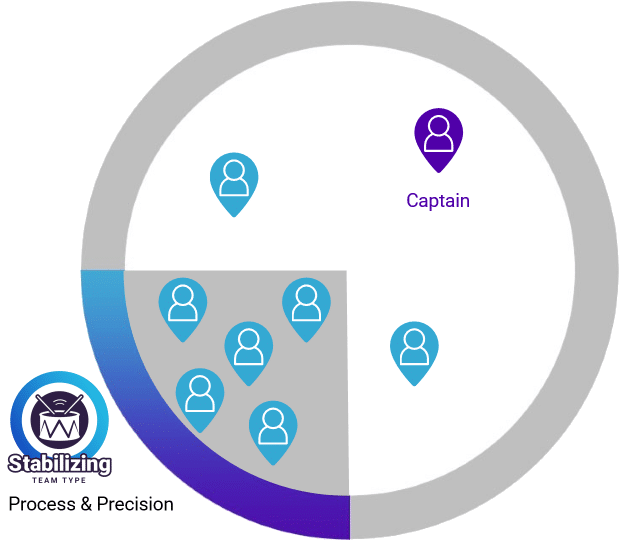Everything you need to know about a Captain
How each Reference Profile works, collaborates, and leads
Everything you need to know about an Adapter
Everything you need to know about an Altruist
Everything you need to know about an Analyzer
Everything you need to know about an Artisan
Everything you need to know about a Captain
Everything you need to know about a Collaborator
Everything you need to know about a Controller
Everything you need to know about a Guardian
Everything you need to know about an Individualist
Everything you need to know about a Maverick
Everything you need to know about an Operator
Everything you need to know about a Persuader
Everything you need to know about a Promoter
Everything you need to know about a Scholar
Everything you need to know about a Specialist
Everything you need to know about a Strategist
Everything you need to know about a Venturer
The Captain leader
Captains are natural innovators. So how exactly do they lead their teams to victory?
As a leader, Captains are sociable yet assertive, and will prefer to move with a sense of urgency. They think freely and innovate quickly, coming up with clear plans of action. While they enjoy driving tasks to completion, they’re also comfortable delegating authority where needed. And they often serve as the voice of change, getting team members excited about upcoming changes.
Below is a list of strengths and cautions when a Captain is in a management role.
Leading strengths
- Sociable and confident
- Embraces change
- Comfortable with risk
- Thrives in times of urgency
Leading cautions
- May fixate on impractical ideas
- Can come across as authoritative
- May take uncalculated risks
- May struggle to provide structure or direction
But it’s not just about knowing how you lead; you also should be aware of the individuals you manage and the Team Type they form. This allows you to tailor your leadership strategies based on the people you’re actually managing—and use your strengths as a Captain to your advantage.
Let’s say you’re a Captain who’s managing a Stabilizing Team. This Team Type is on the quadrant directly opposite yours, which means you’ll generally have competing values. Don’t panic! Different personalities don’t innately lead to failure. Understanding this difference in opinions, however, is a crucial step.
Take a look below at some points of friction to be aware of. Use these to learn how you can use your strengths to lead a team that doesn’t directly align with your Reference Profile.
Leading a Stabilizing Team as a Captain
When a Captain is leading a Stabilizing Team, they may struggle to adapt to the team’s steady pace and detail-heavy processes. You may encounter areas of friction, but there are ways you can help your people stretch their behavioral drives and make the team feel like magic.

Friction
Benefits
The Stabilizing Team’s preference for structure and stability may clash with a Captain’s fast-paced and non-conforming style. The leader may become frustrated that the team is not showing the flexibility the leader thinks is needed to meet their goals.
A Captain’s desire to take risks and innovate quickly can clash with the Stabilizing Team’s desire to work methodically and make decisions carefully. It can be frustrating for team members if they feel they’re not being given the structure and direction they need.
Captains may find themselves generating ideas or taking risks that don’t align with your current objectives. Yet Stabilizing Teams tend to focus on practical ideas and take calculated risks supported by data. A Stabilizing Team can help Captains add process to their work style when appropriate.
A Stabilizing Team can often get bogged down in the details, preventing them from making timely decisions. Yet Captains are expert problem-solvers that can take action quickly. That sense of urgency can help stuck teams get unstuck, so they can put ideas to action.
Based on the benefits and areas of friction that can arise when having a differently aligned team, come up with strategies that will help you lean into your strengths. For example, you could create a high-level action plan and task certain team members with building the processes around it. All the while, keep the group energized and provide timely decisions when team members are stumped.
So, we understand who we are, where we fit into a team, and how we can lead other teams as a Captain. When it comes to leading, though, there is much more to consider. You also need to think about what Strategy Type your team needs to accomplish its goals.
Do you feel prepared to make sure your team feels like magic rather than causing constant friction? Want to learn more? Check out our two workshops around building and cultivating teams that work like a dream.